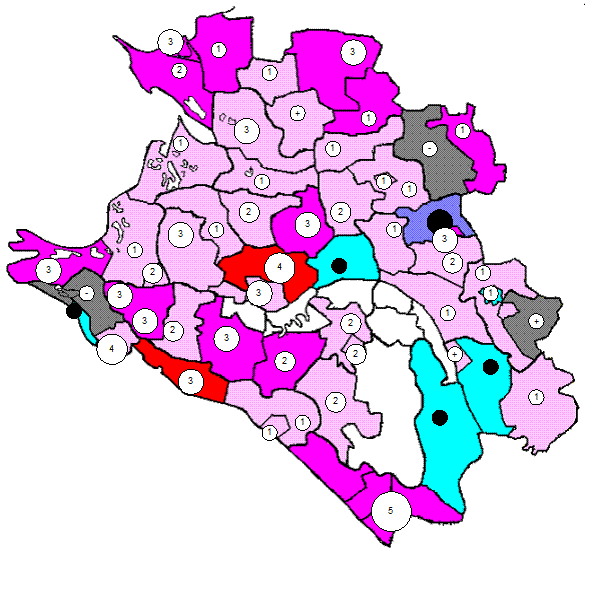Definition of Industrial Cluster
"Clusters are geographic concentrations of interconnected companies and institutions in a particular field. Clusters encompass an array of linked industries and other entities important to competition. They include, for example, suppliers of specialized inputs such as components, machinery, and services, and providers of specialized infrastructure. Clusters also often extend downstream to channels and customers and laterally to manufacturers of complementary products and to companies in industries related by skills, technologies, or common inputs. Finally, many clusters include governmental and other institutions--such as universities, standards-setting agencies, think tanks, vocational training providers, and trade associations." (Porter, M.E. (1998). "Clusters and the New Economics of Competition," Harvard Business Review, November-December, 1998.) Increasingly, the competitiveness of metropolitan regions relies on the development of industrial clusters, or geographic concentrations of businesses and institutions in related economic sectors. The physical proximity of the players encourages interaction and promotes the exchange of ideas and expertise. A look at successful economies also highlights the importance of developing innovative industrial clusters characterized by a high level of interaction among firms, thus enabling them, as a group, to learn about changing economic conditions, adapt to them and benefit from them. The interactive nature of clusters stimulates innovation and economic learning. Clusters stimulate regional competitiveness in three ways: • by increasing business productivity • by boosting their innovation capacity, which underpins future productivity gains • by stimulating the formation of new businesses, which expand and strengthen the cluster Firms that are part of a cluster are expected to operate more efficiently when sourcing inputs; accessing information, technology and institutions; coordinating with related firms; and measuring their performance against other firms so as to improve. Industry “clusters” have been around for a very long time, serving as a catalyst for economic growth. Think: Detroit in the U.S. auto industry’s heyday, Pittsburgh when steelmaking was king, Silicon Valley for tech, Research Triangle Park, Wall Street, and even Hollywood. They are all examples—past or present—of the phenomenon. Perhaps one reason we don’t hear more about clusters is that the term sounds so unsophisticated. To my ear, cluster sounds clumsy; synergy sounds so much better—and says much more about the nature of clusters, why they form, and their advantages. What makes clusters unique is not just that companies with similar or complementary interests, competencies, and needs congregate around each other. It’s that an entire value chain exists within a cluster: suppliers, manufacturers, distributors, academic institutions, researchers, and workforce training, as well as those who provide relevant support services.
|




